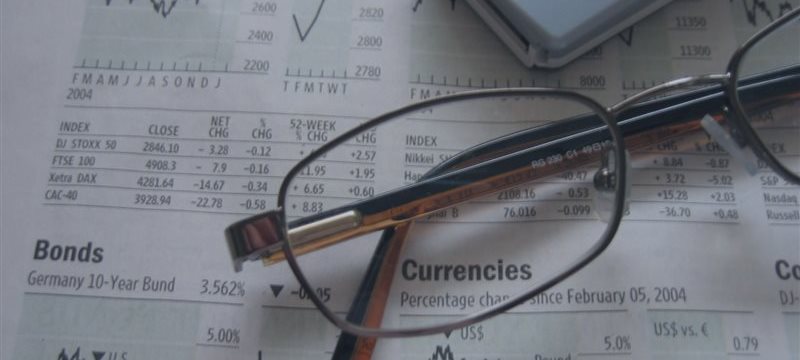
An Introduction to Bonds - A Bond is nothing more than somebody borrowing money from somebody else that gets captured in writing
Introduction. "Bonds are probably easier to understand than the nuances of most other markets, they are uncomplicated instruments and work in a very basic format. A Bond is nothing more than somebody borrowing money from somebody else that gets captured in writing. If you lend me $1,000 for a year, in twelve months time I'll have to pay you back the loan amount, plus whatever interest you agreed to charge me. Of course, you will want the agreement in writing, and therefore a Note is created that says I owe you $1,000, plus interest. If you charge me 5% interest, in one year's time I will pay you back $1,050, which is $1,000 of principal plus $50 of interest. What has been described here is a Bond. That is all a Bond is; a loan, with a Note that promises to pay a certain rate, at a certain time.
When you buy a bond, you are simply giving someone a loan, and whether it's me, a company, or the government, you will get interest on your loan until you get paid back. The U.S. Treasury note is nothing more than a promissory note issued by the U.S. Government that says over a certain time they will honor the note and the interest rate that it bears. It is used by the Fed to cover borrowing requirements to fund Government spending. U.S. Treasuries are deemed to be the most secure of any global Treasury note, and are the most liquid of all traded T-Bills. Interest rate movements affect the bond market, and it is a very straight forward link. When interest rates move it affects the amount of money made or lost in the existing bonds that have been written.
The 10-year Treasury Note has the greatest impact on the U.S. economy due to its influence on long term interest rates. Whilst the Federal Reserve controls the overnight rate, the interest rates paid on long term financing for capital goods as well as the housing market, are established by asserting a premium over the 10-year Treasury Note. In other words whatever the 10 Year note is worth determines the rates for mortgages, investments and loans that are set from that starting point.
If you loan the Federal Reserve $1,000 today, via a 10 year Treasury note that you buy at 5%, they owe you $1,000 plus $50 a year in interest. If interest rates were to move down all of a sudden, let us just say for example from the 5% that it was bought at to 4%, does anything happen to the loan? In one sense no, the Fed still owes you $50 a year plus $1,000 at maturity. But in another sense, yes, things do change on the bond's value when rates move, and here is why; If your neighbor is also now looking for a place to earn interest, and he can only find 4% on the new Treasury note values, or $40 a year in interest, then your 5% note looks pretty good. So he may come over and try to strike up a deal to buy your note rather than buying a lower yielding one from the Treasury; "Hey, for your $1,000 note that pays $50 a year of interest, I will give you $1,100 right now."
At this moment, you are in a win-win situation; you can accept the offer, and pocket a 10% profit, or you can decline the offer, and collect 5% for the next 10 years when everyone else can only get 4%. So the story here is that when interest rates go down, it's great to be a bond-holder, but the reverse is also true; when interest rates rise, bonds lose value. If interest rates rise to 6% the initial 5% bond loses value in an open market because nobody will want your 5% note if they can get 6% buying new. To sell the note the price will have to be lowered, maybe down to around $930 (from your original $1,000), before someone will consider buying your bond that pays less interest.
Interest rates lower equals bond values higher. Interest rates higher equal bond values lower.
Overnight lending rates are controlled by the Federal Reserveincreasing or decreasing the flow of Treasury notes. When rates need to go higher the Fed buys back Treasury notes, therefore decreasing market liquidity, and increasing the return, or yield on the existing notes in circulation. Increased yields equate to higher market interest rates, and lower bond values. When interest rates need to come down the Fed sells more Treasury notes, therefore increasing market liquidity, making more money available to be lent out into the economy. That in turn reduces the yield on the existing notes in circulation, and automatically reduces market interest rates. In this scenario the value of the bond goes up. In a final gesture the Fed should look to be banking the cash received from the sale of those notes as Reserves, that it can then be used in the next cycle of rate changes.
The Interest Rate is an integral mechanism of currency flow throughout the world. Corporations, governments, and individual investors always seek to increase reward while decreasing risk, and U.S. Treasuries are considered risk free investments. Therefore when the yield differential between U.S. Treasuries (in this case the 10-year note) increases when compared to other countries, the U.S. Dollar tends to gain (higher return for less risk). As the Yield on the Note increases the intrinsic value of the Note reduces and vice versa; there are Treasury Notes 'values', and Treasury Note 'yields', they move in opposite directions.
For holders of short-term bonds, (2 year Treasury notes for example), the changes in interest rates will not affect the bond value too much; short-term bonds are normally being bought for their yield. Most 2 year note holders are not looking for capital gains or price swings, they are looking for interest. Bonds with longer maturities, (the 10 year Treasury note for example), will fluctuate in value much more, as they follow the swings in interest rates. The long-term 30 year bonds fluctuate much harder in value than the shorter maturities, hence the big return numbers.


